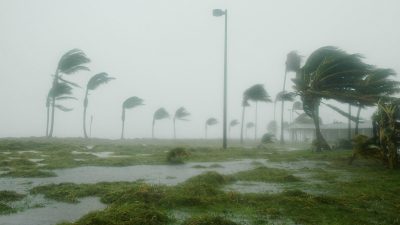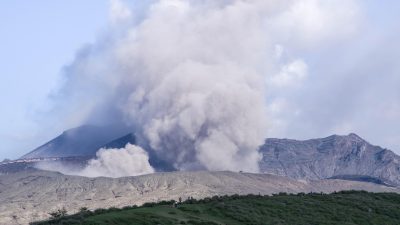A Catastrophe Foretold Yet Ignored – Could It Happen Again?
On 10th October 1980, Algeria faced one of its most devastating natural disasters. The 7.3-magnitude earthquake struck El Asnam (now Chlef), levelling entire districts within moments. With over 2,600 lives lost, thousands injured, and hundreds of thousands left homeless, the catastrophe left an enduring mark on the nation. The disaster laid bare Algeria’s vulnerability to seismic activity and highlighted severe inadequacies in urban planning and disaster preparedness.
The earthquake not only brought destruction but also raised pressing concerns about Algeria’s emergency response, construction standards, and long-term resilience. Did the nation learn crucial lessons from this calamity, or do the same risks persist today? This article delves into the hidden truths of the 1980 El Asnam earthquake and its enduring consequences.
# The Overlooked Warnings: Why El Asnam Was a Ticking Time Bomb
Some viewed the earthquake as an unforeseeable disaster, yet geologists had long identified the region as a seismic hotspot. Positioned along the African-Eurasian tectonic boundary, El Asnam was always at risk. However, limited preventative measures were in place.
Moreover, lax enforcement of building regulations played a significant role in worsening the destruction. Many structures collapsed due to substandard materials and weak designs, the result of cutting costs and negligence. Rather than enforcing stringent safety codes, authorities overlooked violations—until the catastrophe struck.
After the disaster, officials attempted to deflect responsibility, attributing the extensive damage solely to the earthquake’s power. However, experts have consistently argued that many lives could have been saved if safety measures had been prioritised. The lack of proactive planning led to devastating consequences that could have been minimised.
# A City Reduced to Ruins: The Cost of the 1980 El Asnam Earthquake
- Widespread Devastation: The once-thriving city of El Asnam was left in ruins. Entire districts collapsed, roads were torn apart, and over 500,000 people were left without shelter.
- Unimaginable Human Loss: More than 2,600 people lost their lives, with 9,000 suffering serious injuries. Many were trapped under debris, fighting for survival as rescue efforts struggled to keep up.
- Severe Economic Setback: The damage exceeded $1.5 billion, halting economic progress. Factories, schools, and infrastructure were destroyed, leaving a long and difficult path to recovery.
# The Long-Term Effects: How the Disaster Shaped Algeria
Beyond the immediate destruction, the earthquake left lasting psychological and societal wounds. Survivors, particularly children, endured trauma and anxiety, haunted by the events of that tragic day. The lack of sufficient mental health resources only exacerbated their suffering.
Environmental damage was also profound. The seismic shifts disrupted underground water sources, causing water shortages and soil instability. The impact extended beyond physical damage, forcing many families to relocate permanently.
Despite the suffering, the resilience of the people of El Asnam was remarkable. Communities came together to rebuild, demonstrating immense determination. However, many felt let down by a government that failed to deliver lasting solutions.
# Factors That Made the 1980 Earthquake Devastating
The sheer power of the earthquake was not the only reason for the disaster’s scale—several man-made factors amplified the destruction.
- Poor Construction Standards: Many buildings lacked proper reinforcements, making them highly susceptible to collapse under seismic pressure.
- Absence of Early Warning Systems: There were no drills, alerts, or emergency response plans, leaving residents completely unprepared for the quake.
- Destructive Aftershocks: The main earthquake was followed by severe aftershocks, worsening the damage and hindering rescue operations.
# The Aftermath: How Algeria Responded to the Crisis
The disaster exposed Algeria’s inadequate disaster response capabilities. Initial rescue operations were disorganised and slow, leaving many survivors without assistance in the crucial first hours.
International help was offered, yet Algeria hesitated to accept it due to concerns over national sovereignty. This reluctance cost valuable time and lives, as many survivors succumbed to injuries that could have been treated with timely intervention. When aid did arrive, distribution was chaotic, leading to shortages in essentials like food, water, and medical care.
Following the disaster, the government pledged to strengthen building codes and improve emergency protocols. However, long-term enforcement was inconsistent. This raises the question: has Algeria truly learned from the disaster, or are the same mistakes being repeated?
# What the El Asnam Earthquake Revealed About Algeria’s Readiness
- Lack of Disaster Preparedness: Algeria had no structured emergency response, leading to widespread confusion and inefficiency.
- Flaws in Urban Planning: Poorly built structures crumbled instantly, worsening the loss of life and property.
- Government Delays and Mismanagement: The sluggish and poorly coordinated response left many without aid when they needed it most.
- Neglect in Long-Term Rehabilitation: Many survivors never received the compensation or support they were promised, and rebuilding efforts took far longer than anticipated.
# Conclusion: Lessons from the 1980 El Asnam Earthquake
The 1980 earthquake was a defining moment in Algeria’s history, highlighting critical gaps in infrastructure, disaster planning, and governance. While reforms were introduced, doubts remain over whether Algeria is truly prepared for future seismic events.
With the country still sitting on an active fault line, another major earthquake is not a matter of ‘if’ but ‘when’. The key question remains: has Algeria done enough to protect its people, or will history repeat itself?
# FAQs: Key Facts About the 1980 El Asnam Earthquake
- What was the magnitude of the 1980 El Asnam Earthquake?
- It was recorded at 7.3 magnitude, making it one of Algeria’s strongest quakes.
- How many casualties were recorded?
- Over 2,600 people died, with thousands more injured and displaced.
- Why was the destruction so severe?
- Weak construction, poor disaster planning, and a lack of emergency preparedness worsened the impact.
- Did Algeria improve earthquake safety measures after the event?
- Some reforms were made, but enforcement has been inconsistent, raising concerns about future preparedness.
- Is Algeria still at risk of another major earthquake?
- Yes. The country remains in a seismically active zone, meaning future earthquakes are inevitable.
References:
“1980 El Asnam earthquake”
“New Seismic Regulations in Algeria RPA 2024: What’s New and What are the Challenges”
“New Study Suggests Ways to Boost Algeria’s Disaster Resilience”
“BBC ON THIS DAY | 10 | 1980: Thousands feared dead in Algerian quake”
http://news.bbc.co.uk/onthisday/hi/dates/stories/october/10/newsid_3714000/3714612.stm




